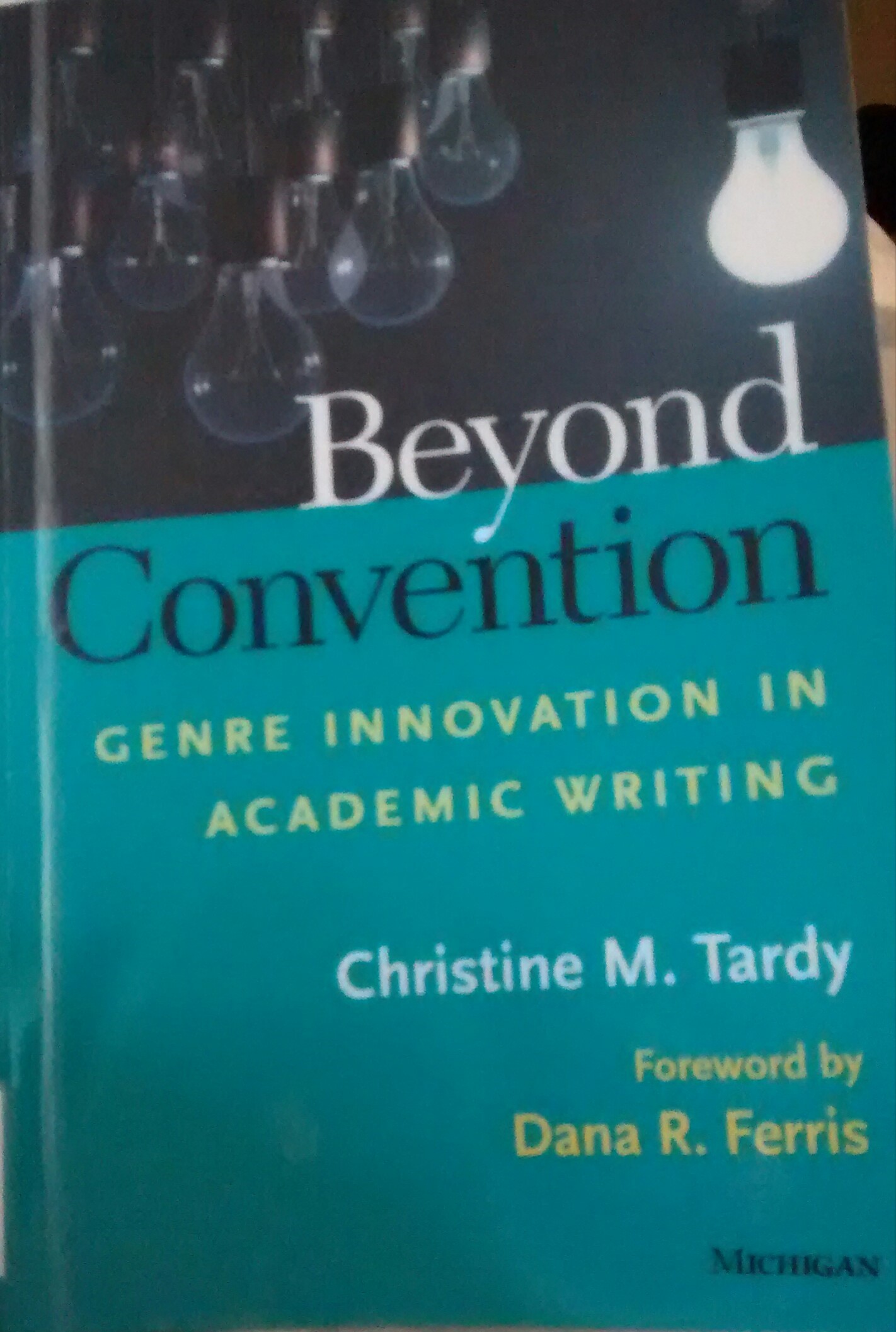Academic Writing, Conventions, and ‘Who Has the Right’
Received wisdom continues to hold that you have to know the rules before you can break them. This is evident in a recent book (2016) on genre innovation by Christine Tardy:
intentionally departing from norms requires an understanding of those norms (p. 39)
 From the perspective of fairness and access, Tardy also recognises (with reference to Bourdieu’s notion of ‘legitimate authority’ and ‘cultural capital’) that this can lead to an imbalance of power:
From the perspective of fairness and access, Tardy also recognises (with reference to Bourdieu’s notion of ‘legitimate authority’ and ‘cultural capital’) that this can lead to an imbalance of power:
What emerges from this complicated web of authorial identity is something of a vicious cycle marked by power and access: Experienced authors gain access to the resources that allow them to produce legitimate language in legitimate forms and situations; in doing so they accumulate symbolic capital; their capital then allows them to exploit the system and perhaps stray from norms in ways that those with less capital cannot; through their distinctive uses of language they may accumulate further legitimacy and power within the market (p. 36)
I like Tardy’s book because it is both theoretical and pedagogical. It fully acknowledges the influence and importance of well-established scholarship on genre and academic writing (eg Swales, Halliday, Martin, Devitt, inter alia), yet also foregrounds the less visible work (in mainstream EAP, at least) of sociolinguists like Jan Blommaert and semioticians like Gunther Kress, as well a critical language theorists like Widdowson and Pennycook, who have invoked the importance of play, creativity and non-linguistic ways of thinking and representing knowledge. Tardy further provides classroom approaches to raising students’ awareness and choices when it comes to their own writing.
But what happens when there are no obvious rules to be broken, no ready-made templates to fall back on, and you have to literally invent your own genre?
This is where Tardy’s book panders to my interests. She acknowledges the importance of interdisciplinarity when it comes to thinking about genre innovation and moving beyond convention in academic writing:
Adopting an interdisciplinary approach is also valuable for understanding genre innovation in ways that are inclusive of diverse writers and writing contexts (p. 2)
Adopting an interdisciplinary approach to writing matters to me for three reasons: 1) my PhD is interdisciplinary, and I am forever trying to get the balance right between sounding like an educationalist and behaving like a philosopher (an analytical one, at that!); 2) I teach general EAP; and 3) I’m drawn to the Finnish approach of phenomenon learning.
The reason I am keen on framing general EAP writing as interdisciplinary is summed up in Judd (adapted from page 126 of Judd, D. (2003) Critical Realism and Composition Theory, London, Routledge):
The traditional lack of a subject matter in writing courses is both a strength and a weakness. Sophisticated writing cannot be divorced from a degree of sophisticated understanding of a concrete subject matter. Even if you apply formal logic to your writing and detect logical fallacies and conflicting assertions in an argument, while important, this will not necessarily lead to a more sophisticated understanding and, thus, to more sophisticated writing. “How could someone learn”, asks Frank Smith (1990: 97) “to detect conflicting assertions in a chemistry text, an article on chess, or to estimate for repairs to an automobile, without an understanding of chemistry, chess or automobile mechanics, in which case contradictions would be immediately apparent?”. The answer of course, is that one cannot […].
and moreover:
It may be unrealistic to expect that your writing will get progressively better when you are writing about several unrelated topics over the course of an academic term because little opportunity is given to you to develop a more sophisticated understanding of those topics. When there is no traditional subject matter in writing courses, we are free to select topics that are of interest to us and that lead us to understand ourselves by understanding the world and our place in the world […]. Good writing is not guaranteed by good understanding, but poor understanding almost certainly inhibits good writing.
My solution to this ‘lack of traditional subject matter’ and to the need ‘to understand what you are writing about’ has been to draw on students’ own and emerging disiciplinary knowledge with a view to interacting and collaborating with the knowledge of others. This creates an interdisciplinary writing context and raises the question of how to negotiate rules and transgress genre boundaries whilst still being recognisibly academic.

But now, the question of ‘what genre should my students write in?’ looms large.
Tardy’s book is providing me with ways to build on traditional genres in order to innovate and move beyond traditional conventions in academic writing. I am asking my students to create innovative genres because neither they or I know what knowledge will be brought to the classroom each term and what knowledge will emerge from their collaborative research. I have no template for them to follow. I rely on them to create writing that brings together content knowledge, audience awareness and modalities that effectively get their message(s) across.
Is anyone else grappling with these issues?
